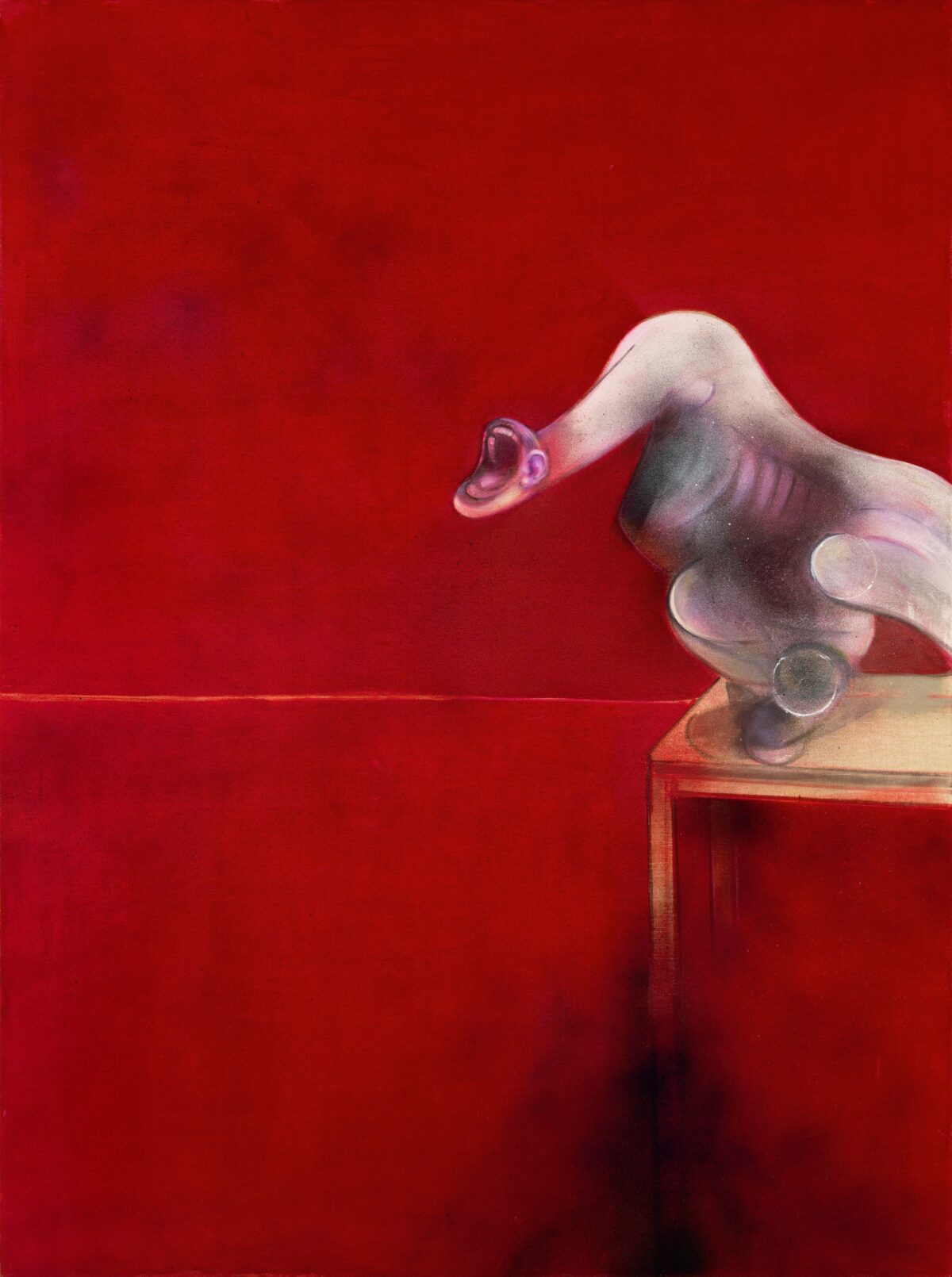\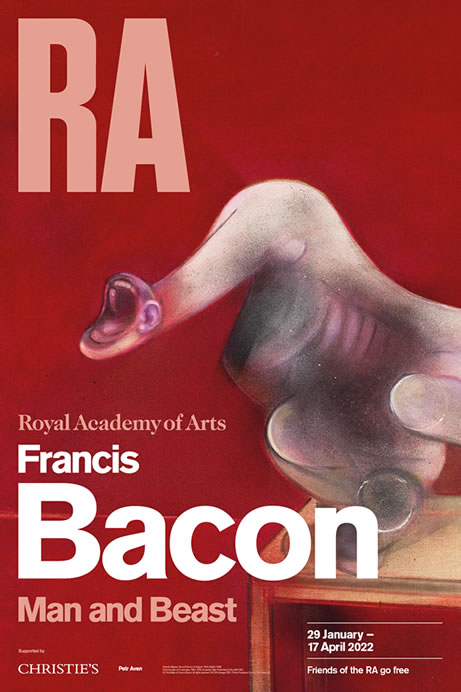 Francis Bacon (1909-92) was an Irish-born British figurative painter known for his raw, unsettling imagery. He’s generally considered to be one of the greatest modern artists ever. A charismatic, articulate, well-read, gay bon-vivant, he held court in London’s Soho for decades. If I could travel back in time, it would be to spend an afternoon drinking with him in London’s legendary Colony Room Club which he co-founded.
Francis Bacon (1909-92) was an Irish-born British figurative painter known for his raw, unsettling imagery. He’s generally considered to be one of the greatest modern artists ever. A charismatic, articulate, well-read, gay bon-vivant, he held court in London’s Soho for decades. If I could travel back in time, it would be to spend an afternoon drinking with him in London’s legendary Colony Room Club which he co-founded.
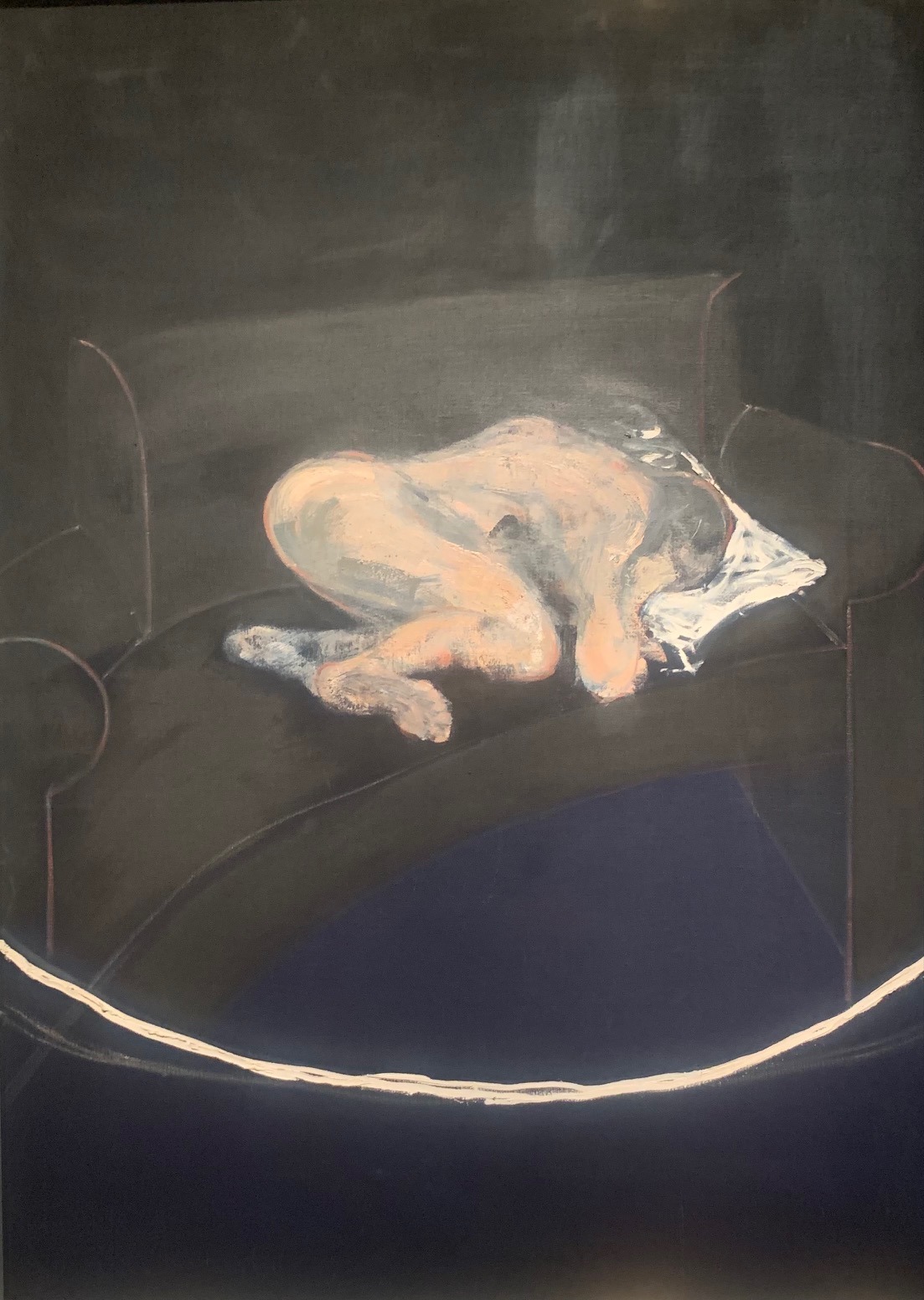 Bacon’s paintings are traditionally perceived as studies of the human figure caught alone and vulnerable in claustrophobic interiors. Man and Beast, an exhibition of Bacon’s work currently on at London’s Royal Academy, explores another side to Bacon, his obsessive interest in animals, and how watching animals can reveal a lot about the nature of humans. Bacon grew up on a farm in Ireland and spent a lot of time observing the animals around him – from birth to death. This heavily influenced his post-war work which often featured strange hybrid creatures, curious silvery bodies stretching out, crouching down, or letting out primal screams.
Bacon’s paintings are traditionally perceived as studies of the human figure caught alone and vulnerable in claustrophobic interiors. Man and Beast, an exhibition of Bacon’s work currently on at London’s Royal Academy, explores another side to Bacon, his obsessive interest in animals, and how watching animals can reveal a lot about the nature of humans. Bacon grew up on a farm in Ireland and spent a lot of time observing the animals around him – from birth to death. This heavily influenced his post-war work which often featured strange hybrid creatures, curious silvery bodies stretching out, crouching down, or letting out primal screams.
Bacon also incorporated imagery of his friends and lovers into this work. He began a passionate, violent relationship with Peter Lacy in 1952. Bacon attributed his own sadomasochism to childhood beatings by his father.

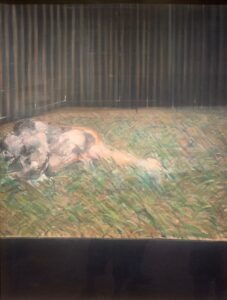 The 1950’s were very homophobic – homosexuality was still illegal in the UK and even innocent imagery such as ‘Two figures in the grass’ 1954 led to Bacon being reported to the authorities for indecency. To get around the use of naked men in his art, Bacon started featuring wrestlers in his work – real beasts of men.
The 1950’s were very homophobic – homosexuality was still illegal in the UK and even innocent imagery such as ‘Two figures in the grass’ 1954 led to Bacon being reported to the authorities for indecency. To get around the use of naked men in his art, Bacon started featuring wrestlers in his work – real beasts of men.
As well as beastly men Bacon’s art at this time also featured dogs, owls, monkeys, horses and bulls, sometimes combined with human features. He spent time at London Zoo, and also in the bush in Southern Africa, closely studying animals. His time out with the brutish men of Soho also inspired his work. Bacon used portraiture to scrutinize animality as a human trait, and the implication behind his portraits is that beneath the thin, fragile veneer of manufactured human respectability, we are very similar to our non-human counterparts.
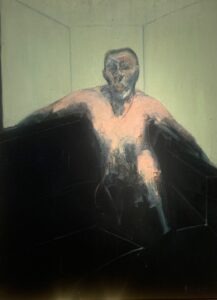 Another section of the show focuses on Bacon’s animalistic nudes. One of Bacon’s models for this work was another boyfriend, George Dyer, a petty criminal from London’s east end, with whom Bacon had a very turbulent 8-year relationship from 1963.
Another section of the show focuses on Bacon’s animalistic nudes. One of Bacon’s models for this work was another boyfriend, George Dyer, a petty criminal from London’s east end, with whom Bacon had a very turbulent 8-year relationship from 1963.
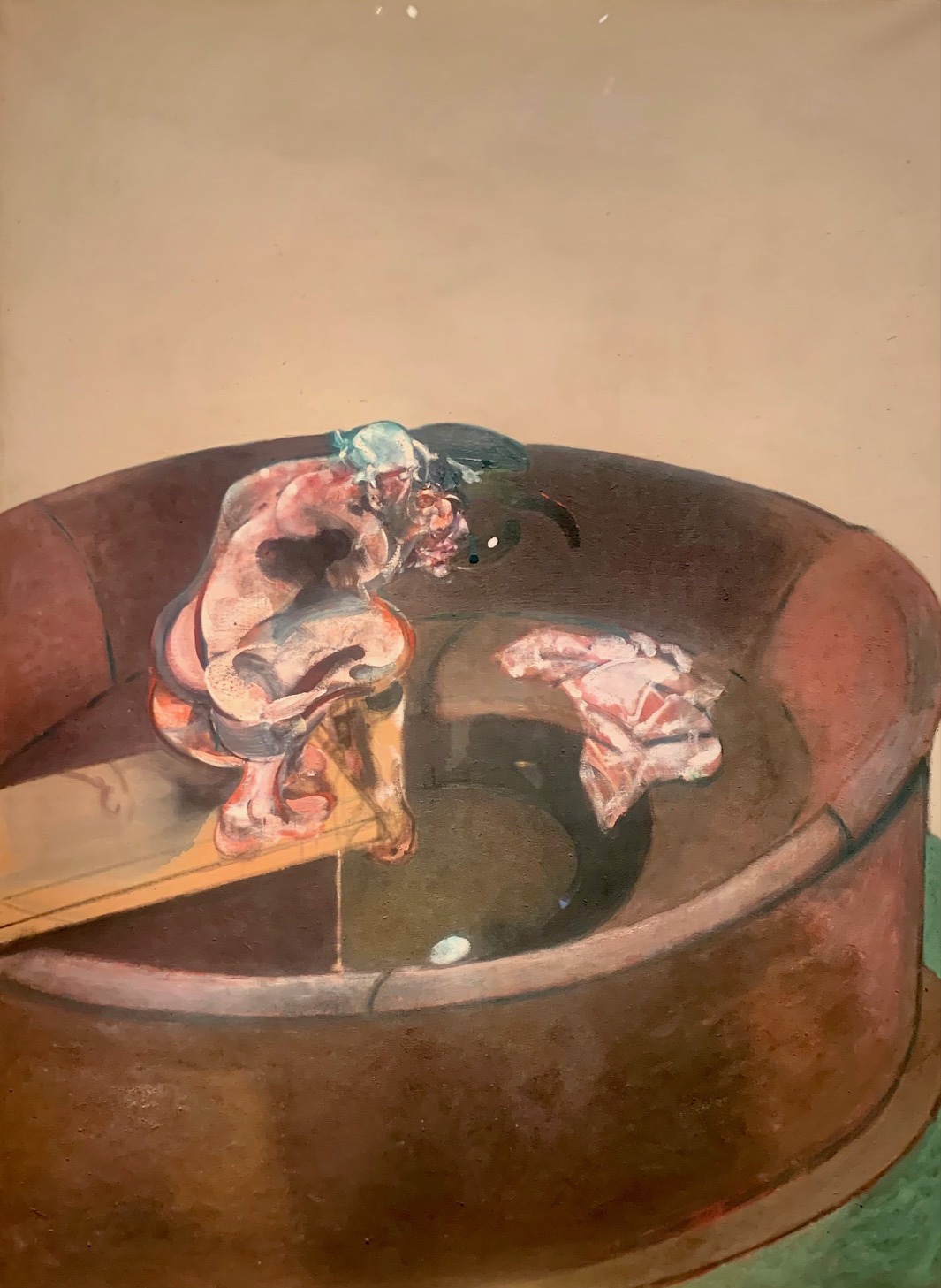
Bacon is of course also famous for his triptychs. His large-scale triptychs from the 1960s are well represented in the show. One of my favourites features George Dyer again, displaying the repetitive cycle of daily existence, ingestion, sex and excretion.
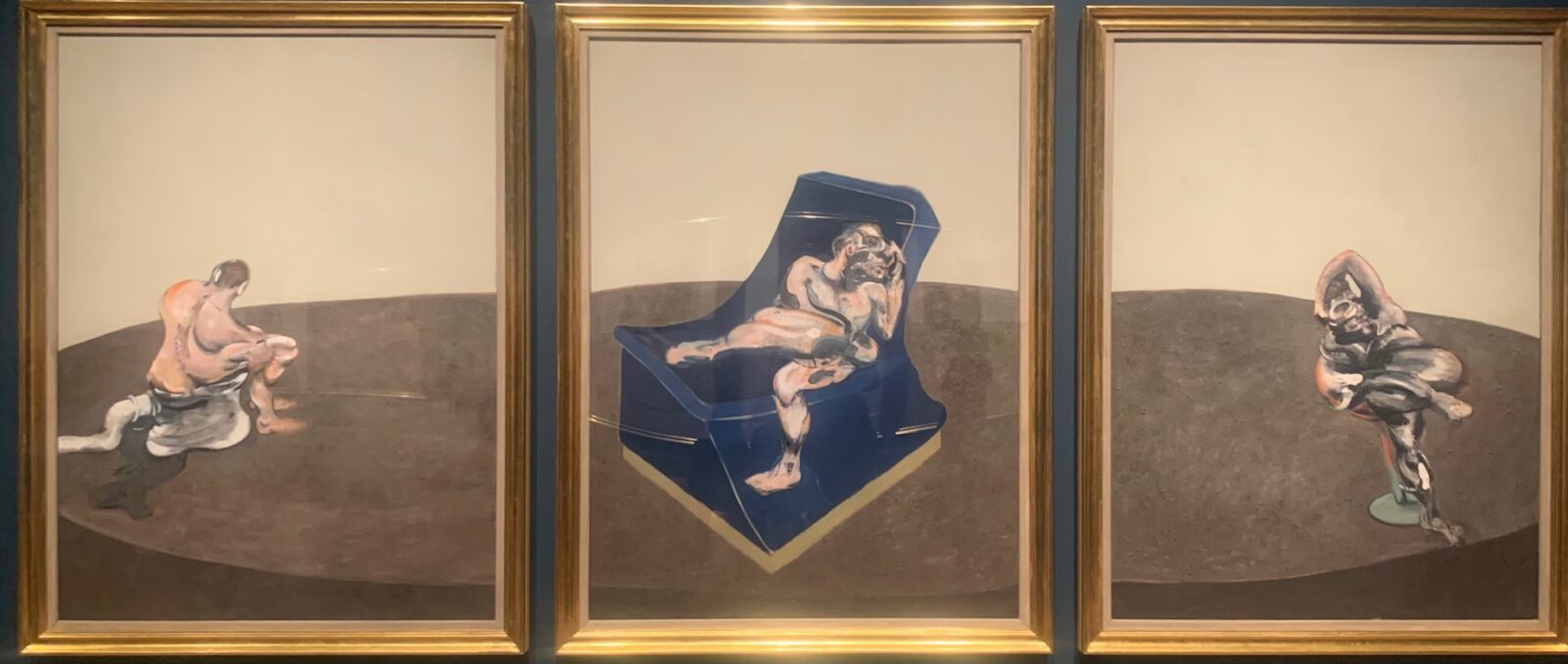
Man and Beast is an excellent show – little divides us from our beastly cousins in the animal kingdom.
The show is on at the Royal Academy, London until 17th April.
Review: Ris Fatah
Queerguru Contributing Editor Ris Fatah is a successful fashion/luxury business consultant (when he can be bothered) who divides and wastes his time between London and Ibiza. He is a lover of all things queer, feminist, and human rights in general. @ris.fatah

